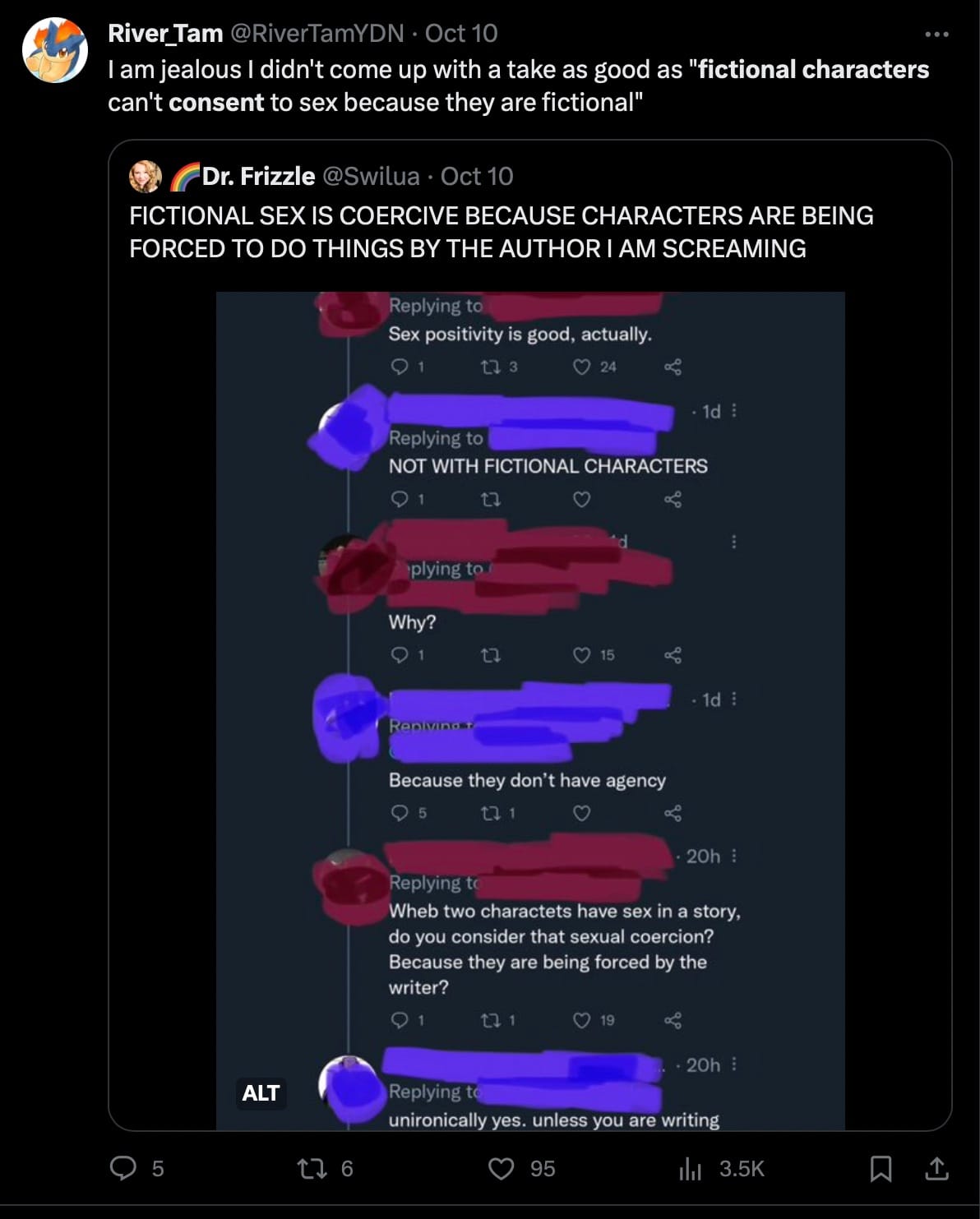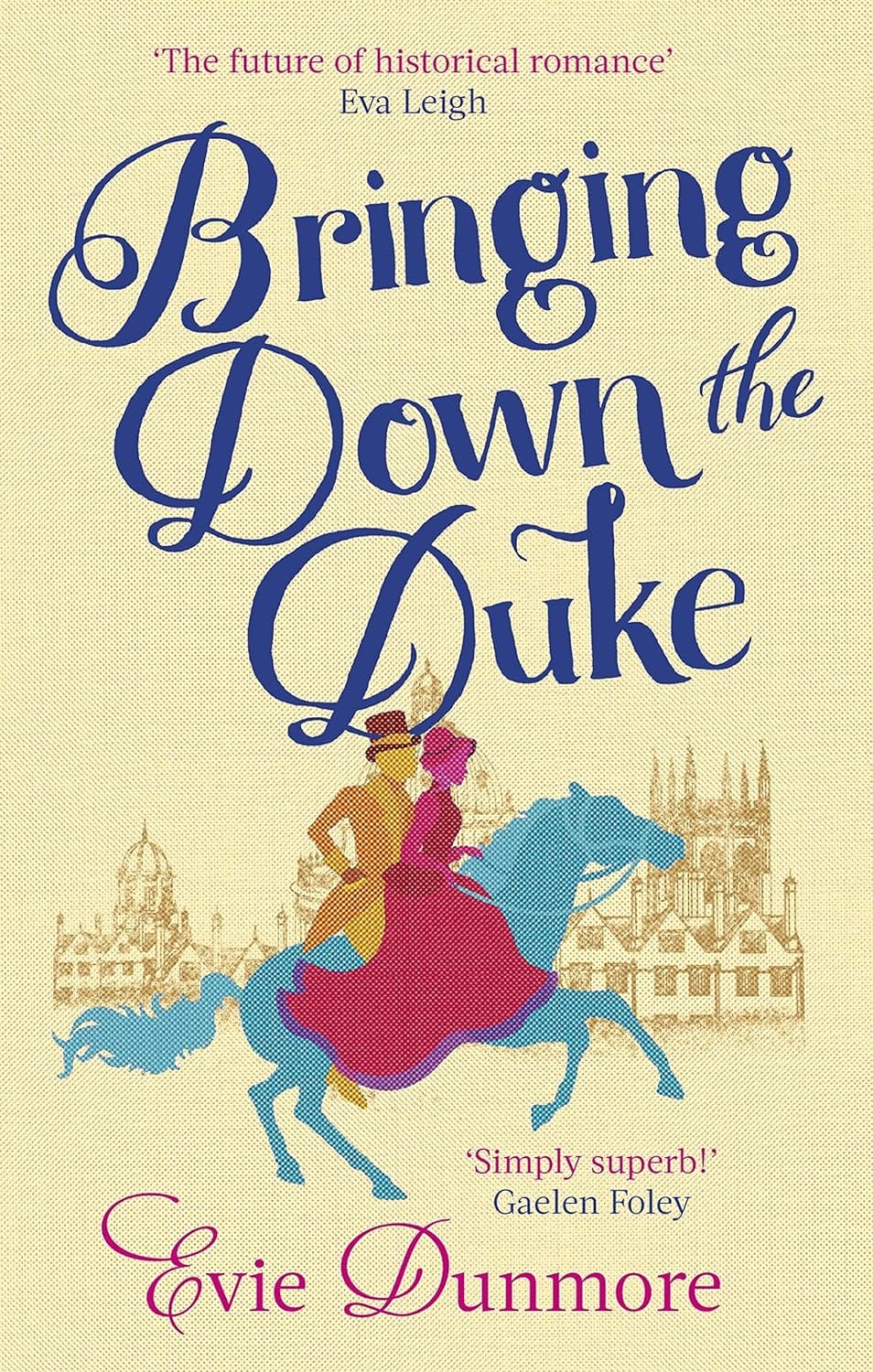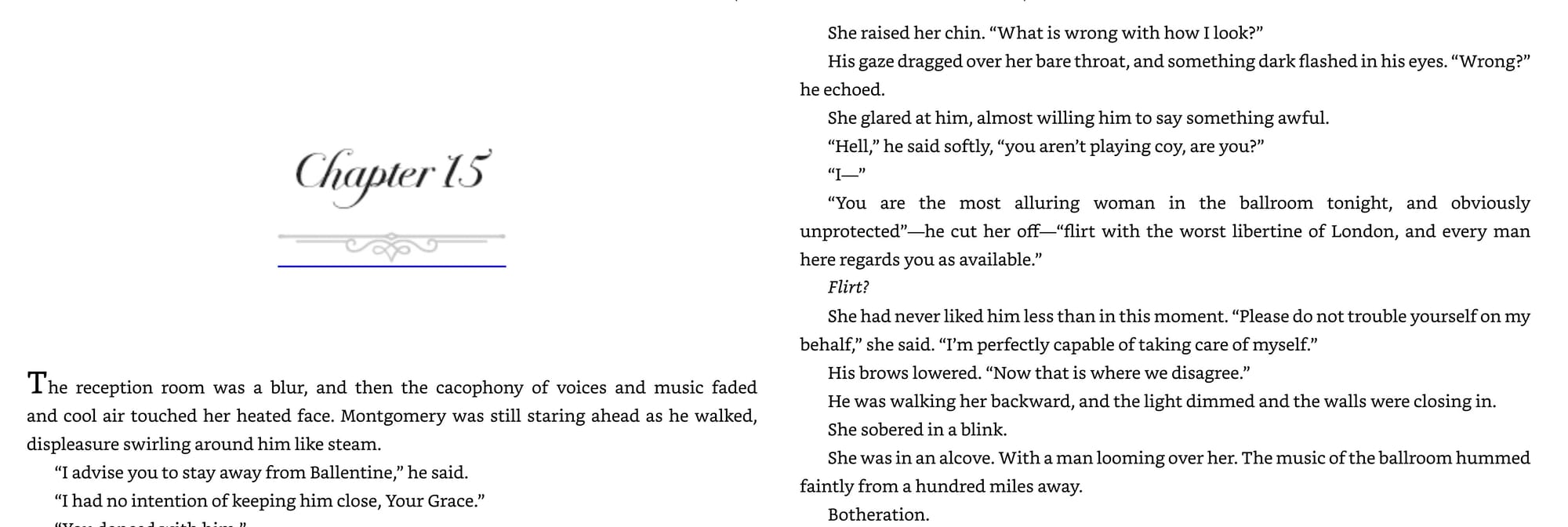Fictional character models *can* consent to sex

First up, an apology. I planned to do a Part 2 on entries to the Self-Published Fantasy Blogoff and then review the largely amazing indie books I've read as part of that competition. I still plan to do this, but was derailed for several months by holidays and then post-summer work/child illness.
In the meantime, I was fascinated by this 'X' (formerly Twitter) thread about whether fictional characters can consent to sex. Obvious on first sight, isn't it? Fictional characters can't consent to sex, or be coerced into it, because they don't exist.
Thing is, as I've known for a while now... it isn't that simple. You see, dear reader, as many of us (insane) authors know, our characters have personalities. And, thus, as I recently discovered, it's wholly possible for the author to script a sex scene and the characters to decide NOT TO HAVE SEX. In this blogpost, I will unfurl the sausage of character sex motivation with ample reference to historical romance.

Just as a trigger warning, this blogpost is going to talk about sex, but it's also going to talk about sexual violence. If these subjects are going to be tough on you, read with care.
I've always known my best fictional characters have personalities independent of their author. I think all of us, in our daily lives, construct mental models of how people around us typically operate. We all know if Aunty Mable regularly dances nude in the bathroom and whether it's a good idea to lend a lawnmower to our friend, Bob.
Well-executed fictional characters, in my experience, also work on personality models. I can say, with some confidence, for example, that Sauron from Lord of the Rings probably doesn't enjoy flower arranging.

The problem comes when the author desperately wants a fictional character to do something that simply isn't realistic for their personality model. This can produce a simple break in reality, where a previously-sensible fictional character suddenly picks up the idiot ball.
In action-based novels, this is usually because the plot requires a character to do one thing, but the character's personality isn't set up to do that thing. Fred needs to be kidnapped by French terrorists for the plot to work, but he's a former special forces operative, and no way realistically would he go into the deserted warehouse with no gun, no backup and a flat phone.
The author secretly knows this. By extension, the character model also knows this, and they end up in a weird grappling match where Fred either conveniently forgets his training (and the reader loses respect for the character), or the author has to create some strange contrivance by which Fred would knowingly put himself under threat.

In romance/erotica, however, the conflict between plot and character model happens usually because the author is desperately shipping two people who don't want to get it on (for whatever reason). And, if you imagine the author always wins, regardless of what the character is enjoying, you can imagine a situation where, genuinely, 'the character did not consent'.
The horrific example of this is in Fifty Shades of Grey. For those of you unfamiliar with this book (lucky you), it's a contemporary erotic 'romance' based on the Twilight vampire novels that was very popular in about 2011. The book features Christian Grey, an insecure, jealous and psychopathic billionaire in his twenties, who claims to have self-made his own fortune (but never displays the skills nor personality needed to do so). Due to his insecurity and lack of any redeeming qualities, he stalks and sexually abuses Ana, a vulnerable young woman, under the pretence entering a kinky relationship.
I would say Christian Grey is Patrick Bateman from American Psycho, but Patrick Bateman as erotic horror villain is actually a good premise for a chilling psychological thriller.

Unfortunately... Author E. L. James didn't write Ana escaping her abuser. Instead, dear reader, the author eventually forces her to marry him.
Below is part of an amazing 'spork' (sticking a rusty fork in your eye) of Fifty Shades by two bloggers who have experience of both sexual abuse and being in the kink scene. Reading this extract, the sporkers highlight in red sentences the author acknowledging the character model recoiling in horror - as you would do, if you were being sexually abused. However, as the bloggers point out, E. L. James also keeps editorialising how Ana should find the abuse deeply arousing.

Once you've seen this schizophrenia between the author's desires and the character's experience, it's not possible to unsee. You're seeing an author visualising an imaginary young woman being horrifically abused, but then forcing that character to continue in the situation because they - personally - find it erotic to write. I suspect, at authorial distance, it is erotic - it's a fantasy about risky sex with a wealthy, dangerous man.
The problem is, if you were in that situation (as Ana is), it wouldn't be erotic at all and the author secretly knows it. In short, Ana, despite being imaginary, simply did not consent.

Recently, while ill, I've been trying to write a romantic scene in the novel I'm (slowly) writing in my Usfani War cycle. The scene will eventually sit near the end of the book and is the point where [spoilers] the protagonist, Izadora lee Tigrane, eventually gets together with the villain of the whole series [/spoiler]. As they're well-conceptualised characters and the relationship is important, I read a lot of historical romance to see how two complex character models can have an erotic scene together.
What's surprising is just how frequently historical romance authors (including me, as it turned out) find, at a critical moment, that their characters simply don't want to get it on. The whole premise of many romances is, obviously, getting two unlikely characters together, but - at the point of the sex scene - it turns out that a surprising number of them have second thoughts.

The funniest example I found was in Bringing Down the Duke by Evie Dunmore, which I picked up as it featured a strong female character (a suffragist) getting together with a duke in a Victorian/Georgian/pre-World War I setting. The heroine, Annabelle, is backgrounded with a miscarriage in her past, which was shameful in that historical period. She feels embarrassed about her seduction by a nobleman, which led to the pregnancy and - obviously - she isn't in a hurry to make that mistake again.
Annabelle is a very smart, well-educated lady. She's not an idiot. Nor is she naive. Unfortunately for Annabelle, the plot needed her to make out passionately at a ball with the romantic hero, a duke who would not ordinarily marry her. And I could tell, at the critical moment, the author realised she had a problem. There was no realistic way that Annabelle, the character model, was going to go anywhere private with the Duke of Montgomery - she was simply too situationally aware. A few pages earlier, she'd even told her friend not to go onto a private terrace with another nobleman for fear of being compromised.
So... the author... removed the scenery.

When I read the book, I read these two pages twice because I couldn't understand where the characters were physically. Because there's this fascinating discontinuity where everything blurs in the reception room. Then, suddenly, she's alone in an alcove outside in a hallway somewhere, with no sense of physical transition.

I went back a couple of pages to see if Annabelle was drunk, but she wasn't. Despite this, she somehow manages to move quite a significant distance through a building in the course of an ordinary conversation, without actually noticing where she is. Purely, it seems, by virtue of the author failing to tell her what is around her. In so far as we're told anything about her physical surroundings, it's that things are blurred, or suddenly appear as if from nowhere.

As I desperately tried to write my heroine going to a private location with the series antagonist (she was not having this shit), I suddenly realised that the author must have deliberately removed the scenery from around Annabelle. By not telling her where she was, the duke could steer her into somewhere she wouldn't ordinarily go, and thus ravish her as the plot required.

I've been writing for about 1,500 words of blogpost now, so I'm not going to bore you with my endless attempts to get my novel heroine to make out with the fictional man she secretly finds attractive. She had an endless series of problems with the idea, partly - as with Annabelle - that she's very situationally aware and had a strong suspicion that, if they were alone together, he might get unpleasantly handsy and force her into some sex acts she wouldn't enjoy.
Eventually, about 2,000 words later, I managed to get her into a physical location where she felt more comfortable and then I got her to realise that she actually wanted to kiss him. And, then, eventually, I got him not to panic or mess up the kissing either (harder than you'd imagine - he is a total klutz with significant sensory issues).
In summary, I had to avoid shortcuts. I had to write around the problem of getting my characters together, tackling how these imaginary people felt and making them feel more comfortable, rather than railroading their personality models into a romantic situation they wouldn't realistically want.
In short, I had to, well, establish consent...
